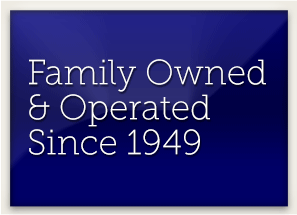News
Tents, Tents, Tents……………
Apr 03, 2018
This time of year we got A LOT of questions, emails, and phone calls about tents. Everyone is gearing up for their spring/early summer graduation party, wedding, or corporate event.
Some of the most common calls we get are:
The Biggest Tent:
Partier: I need the biggest tent you have!
Miller’s: (this is when we have some fun) OK our biggest tent will hold 600 people at round tables of 8. Will that work for you? What kind of party are you having?
Partier: A graduation party for 50 people.
Miller’s: We can help with that.
The terminology mix up:
Partier: Hello, I’m would like you to quote me on a Clearspan tent
Miller’s: “Clearspan” can mean a variety of things in tenting do you mean a Structure tent commonly referred to as a “Clearspan”, a clear top tent with vinyl that is actually clear and see through, or a tent with a 100% open floor plan and no center poles.
Often times the customer is just looking for a tent that doesn’t have center poles, but can get confused terminology when they are researching online.
The plenty of room:
Partier: Hi, we are having a backyard party and need a tent. I’ve done some research online and measured it myself and I can fit a 20’ x 30’ tent.
Miller’s: Is that a pole tent or frame tent?
Partier: Either one will work.
Miller’s: Great! Pole tents will work perfectly in a back yard. They do however take an additional 5-6’ on each side to accommodate space for the ropes and stakes. Technically you will need a 30’ x 40’ area.
Partier: Ummm the 20’ x 30’ won’t fit!
To help with your event planning this year let us give you some terms that might help the communication and planning go a little smoother:
Canopies: This tent style uses tension to keep the tent standing. It usually has 1 - 3 Centerpoles and the stake lines run anywhere from 3’ – 6’ away from the edge of the tent. This style of tent is set up in grass because it needs to be staked into the ground. Canopies don’t support sidewalls well, but can have lights hung in them if needed. These tents are the least labor intensive of the bunch.
Pole Tent: Pole Tents are the bigger and beefier version of the canopy. This tent style uses tension to keep the tent standing as well. It has Centerpoles and/or Quarter poles depending on the size and the stake lines typically run anywhere from 5’ – 8’ away from the edge of the tent. Usually this style of tent is set up in grass because it needs to be staked into the ground, but can be set up on asphalt. These tents are less labor intensive and are built faster than the Frame tents to follow.
Frame Tent: This style of tenting has a metal skeleton built, lifted into the air, and then the vinyl pulled over top. It has an open floor plan and anchor points can be closer to the tent leg as little as 1-2’ away. This tent can be set up just about anywhere because it can be staked into the ground, or anchored with concrete blocks.
Structure or “Clearspan”: This style of tenting is the biggest and strongest tent style. These tents are usually used in long term installations, for events with heavy needs like hanging lighting truss, or events with weather concerns as these tents usually have a wind rating of 60+ mph. These tents can be set up in a multitude of locations and anchored with stakes or concrete blocks.
Now that you know tent styles and terms your planning should go smoother and eliminate those sometimes awkward conversations of trying to figure out a tent style.
Tune in next blog to get some tips on tent size and help with figuring out your tenting needs.


